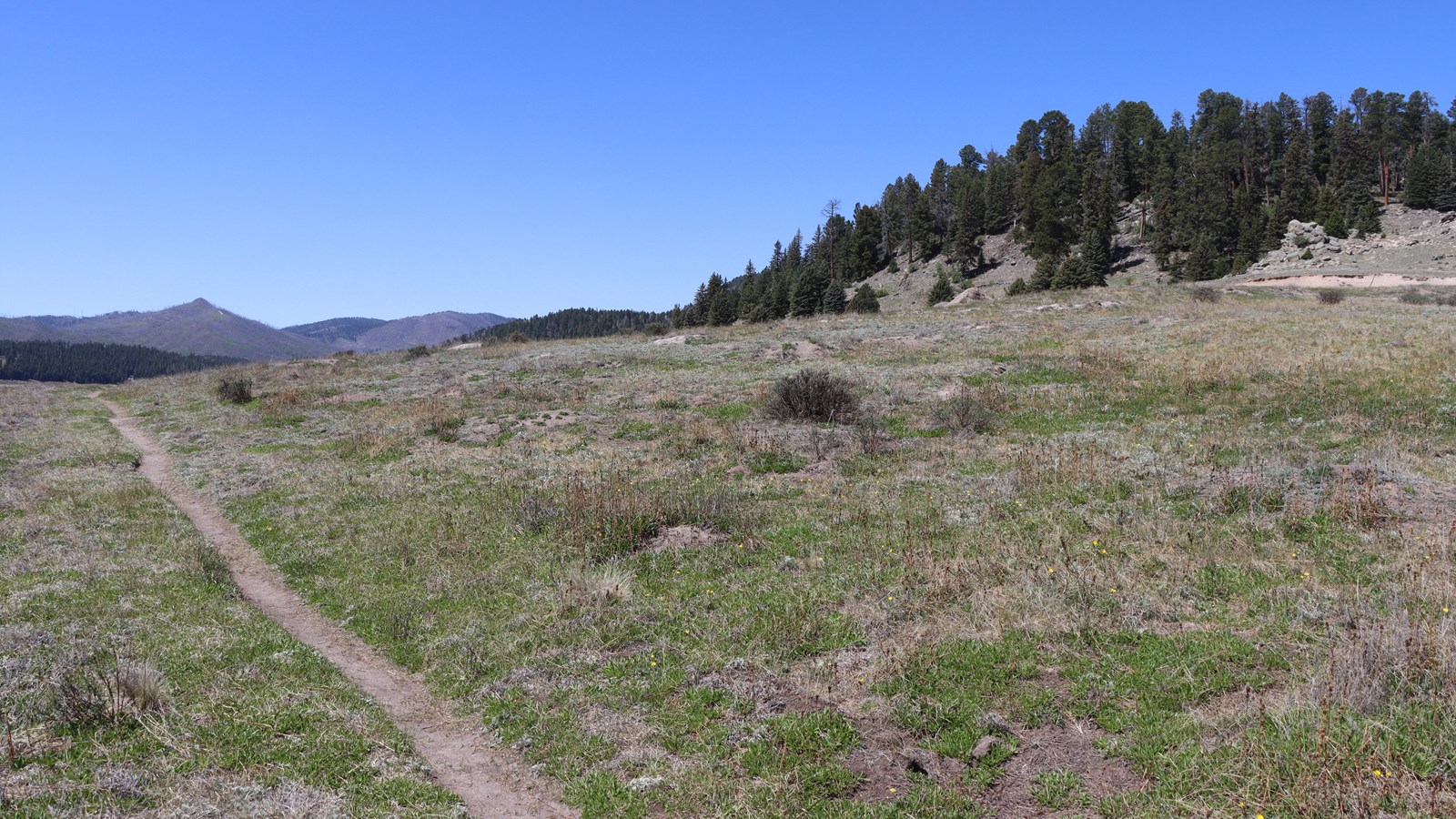Last updated: May 29, 2024
Place
Cerro La Jara Stop 2

NPS
As you walked, you probably noticed that you are walking in a large valley and there are rounded hills or mountains in the distance, behind you, and to your right. You are walking in a volcanic caldera – a depression formed during a volcanic eruption. This caldera was formed as the result of a very large volcanic eruption about 1.2 million years ago. It is somewhat circular in shape and 12 to 15 miles across.
Before the eruption, a large magma chamber existed deep underground, beneath where you are now standing. Pressure from the hot magma and gas built up to the point where the ground began to shake and crack along a circular fault system called a ring fracture. Gasses and tons of volcanic ash exploded thousands of feet into the air along the fracture. As the magma chamber emptied, there was nothing to support the ground surface and it collapsed downward several thousand feet forming a circular caldera – Valles Caldera. The lava, gas and volcanic ash formed hot, fast-moving flows that filled the caldera and blanketed the surrounding countryside with 300 cubic kilometers – or 75 cubic miles of material. The temperature of the flow would have been more than 900 degrees Fahrenheit and its speed would have been around 65 miles per hour. The mixture cooled and hardened into an ash-flow tuff or ignimbrite. We now call it the upper Bandelier Tuff. The airborne ash traveled for hundreds of miles and has been found as far away as Wyoming and Nebraska.
As you continue to walk on the trail toward Stop 3, notice the wide valley and imagine it without any mountains or hills. When the caldera was first formed they were not present. They erupted much later.
